A rare subspecies of Colorado River cutthroat trout found only in the headwaters of the Dolores, Gunnison and Colorado river basins got a helping hand from wildlife officials this month before a wildfire could sweep through and cook the upper reaches of the small stream they call home.
The Uncompahgre strain of Colorado River cutthroat trout, which is unique to the upper Dolores River watershed in extreme southwest Colorado, lives in Wildcat Creek, and the fear on the part of biologists with Colorado Parks and Wildlife was that the Stoner Mesa Fire — which, as of Wednesday, August 20, had consumed almost 9,000 acres and was burning out of control — would not only have immediate impacts to the native fish, but also leave a lasting toxic legacy.
So, ahead of the fire’s path, CPW work crews, along with biologists crews from the San Juan National Forest, electroshocked the remote reaches of Wildcat Creek and removed 266 native cutthroats. The fish were put in buckets and work crews put in about six miles of shuttling buckets of the rare native trout from Wildcat Creek to a waiting fish hatchery truck.
CPW toted the prize fish about 165 miles northeast to the state’s Roaring Judy Fish Hatchery near Gunnison. There, the fish will be carefully sequestered from other trout in the hatchery. They could be returned to the wild if the wildfire threat passes, or they could be used as brood stock for future native trout reintroduction or population enhancement work in the upper Dolores watershed.
Not just about fire
While the still-burning wildfire certainly poses some immediate risks to this rare and fragile population of native trout, biologists with both CPW and SJNF are just as concerned over the lasting impacts a fire of this scope can have on the native trout.
“While the fire itself and aggressive fire suppression with retardant drops pose a risk to the fish, the primary concern is the potential flooding caused by loss of bank stability from the lack of streamside and landscape vegetation,” said Kade Jackson, a CPW aquatic biologist from Durango. “Flooding events can introduce fine sediment and ash into streams, covering spawning gravels, eggs and fry as well as coating fish gills and reducing their surface area for oxygen uptake, potentially leading to suffocation. Post-fire flooding can also lead to chemical irritation, reduced water quality, and increased metabolic demands on fish, all of which can cause additional stress or even mortality.”
In an era where climatic events — particularly large-scale wildfires roaring through the last strongholds of native trout in the West — are having a noticeable impact on trout and trout fishing, this kind of rescue effort is becoming more and more common. In fact, for Jim White, CPW’s southwest region aquatic biologist who helped with this month’s effort to move the Uncompahgre cutthroat trout to safety, this is his second rodeo. In 2018, White and a group of CPW and USFS crews famously preserved an extremely rare population of San Juan cutthroat trout — once thought to be extinct in its native range — from the impacts of the 416 Fire that burned north of Durango. Similar efforts have taken place up and down the spine of the Rockies, from work to save newly restored populations of Gila trout in southern New Mexico, to relocation efforts done in Montana to move native bull trout into better habitat as climate change continues to warm the fish’s home waters.

Climate change is but one threat
While global climate change has become perhaps the greatest threat to native trout in the Rockies, biologists with fish and wildlife management agencies all across the West continue to deal with other existential threats. Non-native trout continue to encroach on native cutthroat trout habitat, and, of course, continued human development and encroachment takes a toll, too.
Most native cutthroat (and Gila and Apache) trout today are relegated to small, isolated pockets of remote country. Often, to keep these fish from hybridizing with exotic rainbow trout or other non-native cutthroats, these fish live above natural or man-made barriers. So, in many cases, efforts to protect native trout do so by isolating them from invasive fish, like browns, rainbows, and brook trout. None of these fish are native to the Rockies. Browns are native Europe, Asia, and North Africa; rainbows are native to coastal waters of North America, and brookies are native to waters in the upper Midwest, Appalachia and the eastern half of Canada.
The isolation, while necessary to protect the genetic integrity of the native fish, also makes them more susceptible to natural calamities, like flash flood events, landslides, avalanches and, yes, wildfires. With most native trout and char in the U.S. occupying about 10 percent of their native range, efforts to protect the isolated pockets of fish will certainly continue. It’s also likely that efforts to expand these native fish populations will be needed to ensure their long-term survival.

For instance, when the San Juan cutthroats were removed from the Hermosa Creek watershed ahead of the 416 Fire in southwest Colorado in 2018, the captured fish were employed as breeders. Eventually, some 6,000 San Juan cutthroat trout were used to establish four new populations of these native trout. The same outcome could be the result of this most recent effort to capture and protect the Uncompahgre cutthroat trout from Wildcat Creek.
“It’s not every day in fish and wildlife management that you feel like you’re making a meaningful difference for the greater good,” White said. “But today we truly felt like we were fighting the good fight and securing a conservation victory for a unique little trout in an unsuspecting stream right in our own backyard.”

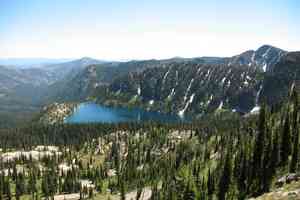






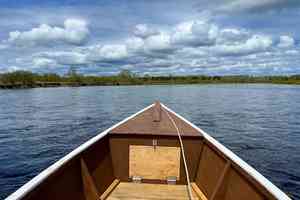




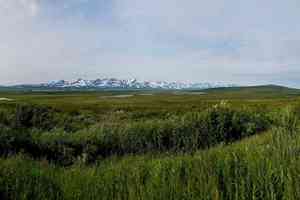
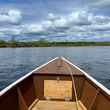


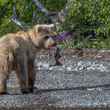

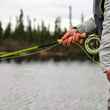


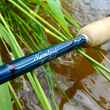
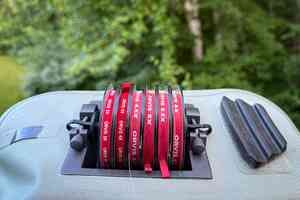
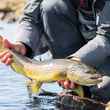
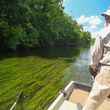
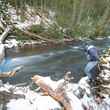




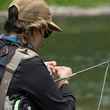
Comments
Mark Shin replied on Permalink
It's great to know that folks like this, heck ORGANIZATIONS like this, remain and are doing good work for the conservation of our environment. In times when our government looks to repeal standards for greenhouse gas emissions, more work must be done to elevate the knowledge and participation required. PLEASE PARTICIPATE and comment at https://www.regulations.gov/document/EPA-HQ-OAR-2025-0194-0093 and check out the thread on the TU forum at https://community.tu.org/discussion/good-news-not-so-good-news-and-what-...
Bill Dunn replied on Permalink
This is not the first time CPW and The Roaring Judy have done this. They both did this procedure for the Hayden Pass fire in 2016. Genetically unique cutthroats had been previously discovered in Hayden Creek and CPW went in to collect as many as possible before the ash-carrying rain from the Hayden Pass fire destroyed the population.
The Roaring Judy now has isolation facilities setup for exactly these types of recoveries now but when the Hayden Creek trout arrived they lived in a repurposed semi trailer on the Roaring Judy grounds. It is critical to keep these outside fish isolated from the rest of the fish being raised there in case these refugees are carrying the next aquatic COVID-19.
The hatchery staff fed them multiple times each day. They even chopped liver and hand fed it to the brood stock when they reached that stage.
They were housed in a handful sky blue containers and the fish did their best to change colors to match their environment. They were not pretty fish.
There were not enough containers for each spawning male to have it's own tank so there were fights and fatalities at spawning time. Consultations with the CPW biologists were frequent.
Eventually a proper isolcation facility was built and these fish were the first to move in. The hatchery staff continued to nurture and spawn.. They had the best care possible for a genetically unique trout. Eventually they had enough to stock and CPW biologists had identified a suitable environment for them. It is important they are not exposed to other trout to keep their genes pure so the relocation selection is critical to long-term success..
The Roaring Judy has since added several more isolation units that are on constant standby and I'll bet they are glad they did.
Pages